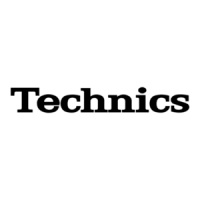Suggestions for Safety
Before using this unit. be sure to read applicable items of the
operating instructions and these safety suggestions carefully.
Afterwards keep them handy for future reference. Take special
care to follow the warnings indicated on the unit itself as well as in
the operating instructions.
11.
l.wt
a er and Moisture -- The unit should not be used near
water -- for example, near a bathtub, washbowl, kitchen
sink, laundry tub, in a wet basement, or near a swimming
pool, and the like.
2. Object and Liquid Entry -- Care should be taken so that
objects do not fall and liquids are not spilled into the
enclosure through openings.
Outdoor Antenna Grounding -. If an outside antenna
is connected to the receiver, be sure the antenna system is
grounded so as to provide some protection against voltage
surges and built-up static charges. Section 810 of the
National Electrical Code, ANWNFPA No. 70 - 1990,
provides information with respect to proper grounding of the
mast and supporting structure, grounding of the lead-in Wire
to an antenna discharge unit, size of grounding conductors,
location of antenna-discharge unit, connection to grounding
electrodes, and requirements for the grounding electrode.
See figure below.
3. VentilatiOn -- The unit should be situated so that its
location or position does not interfere with its proper
ventilation. For example, the unit should not be situated on a
bed, sofa, rug, or similar surface that may block the
ventilation openings; or placed in a built-in installation, such
as a bookcase o, cabinet that may impede the flow of air
throughtheventilation openings.
4.
Heat -- Th
e unit should be situated away from heat sources
such as radiators, heat registers, stoves. or other units that
produce heat.
5.
P ower Sources -- The unit should be connected to a
power supply only of the type described in the operating
instructions or as marked on the unit.
6.
Power Cord Protection -- AC power supply cords
should be routed so that they are not likely to be walked on
or pinched by items placed upon o, against them, paying
particular attention to cords at plugs, convenience re-
ceptacles, and the point where they exit from the unit. Never
take hold of the plug o, cord if your hand is wet, and always
grasp the plug body when connecting 0, disconnecting it.
7. Polarization -- If the unit is equipped with a polarized AC
power plug (a plug having one blade wider than the other),
that plug will fit into the AC outlet only one way. This is a
safety feature. If you are unable to insert the plug fully into
the outlet, try reversing the plug. If the plug should still fail to
fit, contact your electrician to repface your obsolete outlet.
Do not defeat the safety purpose of the polarized plug.
8. Carts and Stands -. The unit should be used only with a
cart or stand that is recommended by the manufacturer. The
unit and cart combination should be moved
with care. Quick stops, excessive force,
and uneven surfaces may cause the unit
and cart combination to overturn.
a9
3
1-
9.
Wall
or Ceiling Mounting -. The unit should be
mounted to a wall or ceiling only as recommended by the
manufacturer.
10.
Cl
caning -- The unit should be cleaned only as rec-
ommended by the manufacturer.
Printed in Japan
12.
P
w.%?r Lines -- An outdoor antenna should be located
away from power lines.
13. N
onuse Periods--The AC power supply cord of the unit
should be unplugged from the household AC outlet whan left
unused for a long period of time.
14.
Damage Requiring Service -- The unit should be
serviced by qualified sewice personnel when:
(a) The AC power supply cord or the plug has been
damaged; or
(b) Objects have fallen 0, liquid has been spilled into the
unit; 0,
(c) The unit has been exposed to rain: or
(d) The unit does not appear to operate normally o, exhibits
a marked change in performance; 0,
(e) The unit has been dropped, o, the enclosure damaged.
15. s
ervicing -- The user should not attempt to sewice the
unit beyond that described in the operating instructions. All
other servicing should be referred to qualified service
PerSOnnel.

